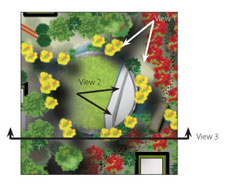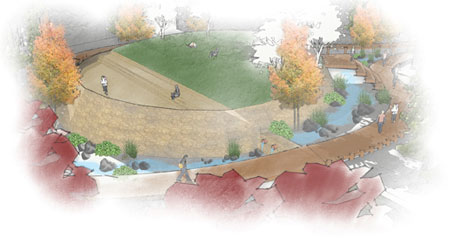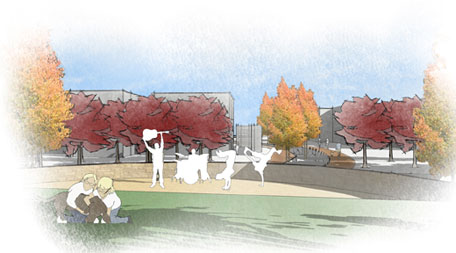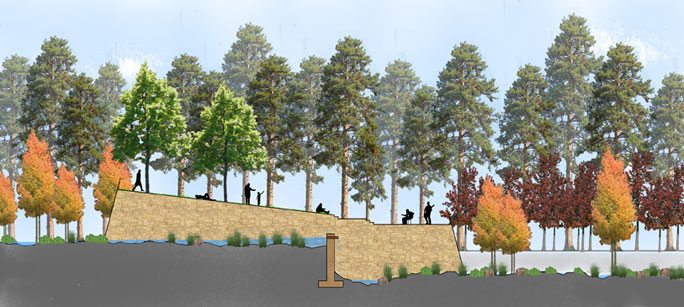 |
This site feature is a large, circular gathering area with a diameter of about 95 feet. It sits on the island of land created by the splitting and rejoining of Aspen Creek and is transected by the Rim. The west end of the clearing is a turf area that slopes toward the east. At the point where the Clearing is transected by the Rim, the turf transitions to a series of steps and terraces paved with sandstone. This area has a number of significant features that will benefit the campus and the community; they are as follows:
Aesthetic
- An appealing, lush turf area surrounded by riparian vegetation and adjacent to the maple ribbon that moves north/south through the site and pops with vibrant color at various times of the year
- The main form is faced with sandstone, a local material commonly associated with the Mogollon Rim
|
Environmental
- Drains into creek
- Slope faces east, away from hot afternoon sun
- Offers a variety of microclimates; it has some trees for shade but serves as the main open, sunny spot on campus
- Uses local building materials
Function
- Multiple access points
- Higher vantage point, offering great views of the campus
- Only area of turf on campus
Economic
- School could rent this space out for big events
|

VIEW 1 This is a bird’s-eye perspective of the north side of the Clearing. When rainwater, collected in Aspen Creek reaches the Rim, it overflows through metal pipes to a ponding area below, where is collects before continuing down the creek bed toward the Huning entrance. |
Social
- Large, open gathering area for the campus and community to use
- Could be used by large groups or individuals for performances, meetings, recreation, relaxation, and people watching…
|

VIEW 2 This is a perspective of some performers being watched from the turf slope of the Clearing. The maple ribbon and Aspen Creek can be seen in the background. |
|

VIEW 3
This is a west-east elevation of the Clearing with the Maple Ribbon and ponderosa pine forest in the background and Aspen Creek in the foreground. The upper section of the creek is generally shallow; whereas the lower section of the creek is deeper to accommodate larger volumes of water.
|










![]()




